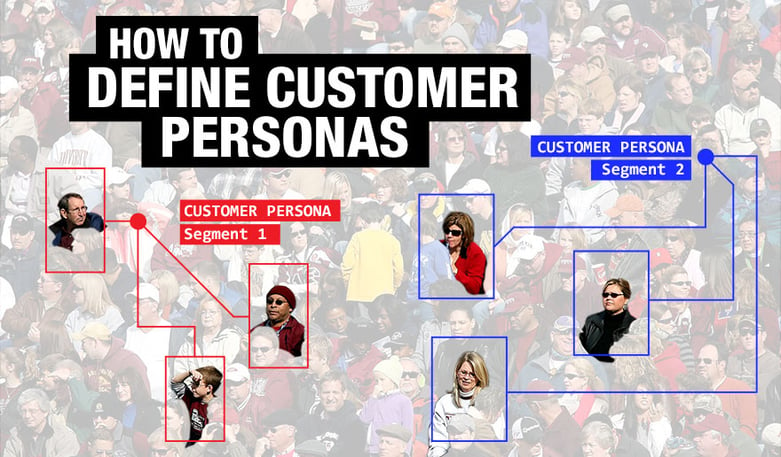Some call this defining your “customer persona”.
Few products and services are so specialized that they have only one target audience.
Yet many brands -- in an attempt to stretch budgets -- use one general message which reaches too broad of an audience. This creates a diluted message that delivers lower ROI than if it was targeting the single best customer.
Is this something you have done – plan marketing around “ALL” potential customers?
You aren’t alone. We have an innate desire to be liked by everyone personally and that also extends to businesses. One of my consultations with a podiatrist that has special treatment for heal pain was adamant that his demographic was teens to seniors, everyone that walked and ran. I repeated the question in different ways over the next 15 minutes until he finally admitted that the bulk of the patients he was treating were 50+ in age. Though there are other demographics that could benefit they were not the ones currently being treated. A secondary audience that would need a different marketing approach would be young athletes with injuries.
This is why defining the primary audience, the statistics of a very defined segment is needed. Marketing to a 50 year old and their triggers is different that targeting a mom with a child that has a sports injury.
Catalpha’s Consumer Pivot™
This data I call the Consumer Pivot™. Defining your audience segments: primary, secondary and fringe. By documenting differences and similarities you develop the outline of messaging, location, and pain points to use in marketing, this includes copy on product packaging, ads, POP and your website.
By documenting differences and similarities you develop the outline of messaging, location, and pain points…
Define your variety of audiences.
Write a highly focused description of each consumer segment: primary, secondary and fringe audience. It can take multiple drafts.
What are their demographics and psychographics?
Think of the commonalities of the different audiences: age, profession, education, reason they need your product or service.
One insurance company had identified their target as 62+ years old and used music they related to. Wanting to get better results, they hired a consultant. Instead of creating a new campaign he first researched their brand and discovered their biggest customer segment was 55 year olds. Just changing the music to a style the 55 year olds listened to in high school increased response significantly. And the increased revenue more than paid for the consultant.
What are their motivators
Access this information from your customer accounts and prospect files to write your different customer profiles.
- Are sales primarily motivated by price or by a totally different problem? Maybe secondary target is price conscious but primary wants the “best”.
- Where are you finding prospects and what are they responding to?
- Do you think you are getting the best results from your marketing efforts to these customers? Just by changing the background music an insurance company saw a significant increase in ad results.
And there's a great deal of information available from industry reports and trade articles about consumers and competitors.
Knowing “why” will help you define your write customer profiles.
Having defined customer personas is essential to successful brand positioning!
Customer Persona is 1 of 4 critical items for brand success. Business and brand success depends on knowing
- your audience (customer persona)
- your competition
- your business
- your unique selling position
Most of us balance multiple responsibilities as business owners and product managers. Having a company, audience and competitor profile provides your brand managers, marketing consultants the information necessary to provide thoughtful, strategic strategy recommendations of where to market as well as what visuals and messages resonate with the core audience.
Success doesn't happen on gut decisions or intuition. These steps are crucial to your success and brand longevity. Remember, this is not a once and done process. What worked in the past isn’t enough to maintain or grow your business… especially if your target customer is under 60.
I guarantee if you execute these crucial steps you’ll have the effective branded message that will get results.
Not all organizations are staffed to perform these internally. Over the years, we put into place procedures to create consistent results for our clients.
- If you’re concerned that your marketing dollars aren’t bringing the response they should.
- Maybe this is the first time you are launching a product?
- You’re feeling overwhelmed because you need to go through this process alone
Well, you don’t have to go it alone. If you’d like help implementing these and our other Brand Pivot™ Steps give me a call.
You may also be interested in these articles:
How to Be Better at Marketing Than Your Competitors
Why Tracking Your Marketing Efforts Is Important?
5 Questions To Use To Define Your Customer Personas


